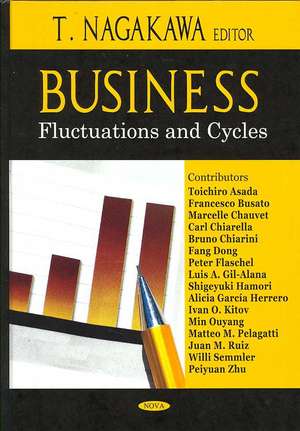Business Fluctuations and Cycles
Editat de T. Nagakawaen Limba Engleză Hardback – 25 oct 2006
Preț: 1114.08 lei
Preț vechi: 1522.41 lei
-27% Nou
Puncte Express: 1671
Preț estimativ în valută:
213.21€ • 221.77$ • 176.01£
213.21€ • 221.77$ • 176.01£
Carte disponibilă
Livrare economică 22 martie-05 aprilie
Preluare comenzi: 021 569.72.76
Specificații
ISBN-13: 9781600215032
ISBN-10: 1600215033
Pagini: 294
Ilustrații: tables & charts
Dimensiuni: 189 x 263 x 25 mm
Greutate: 0.83 kg
Editura: Nova Science Publishers Inc
ISBN-10: 1600215033
Pagini: 294
Ilustrații: tables & charts
Dimensiuni: 189 x 263 x 25 mm
Greutate: 0.83 kg
Editura: Nova Science Publishers Inc
Cuprins
Preface; The Driving Forces of Job Flows over the Business Cycle: Theory and Evidence; Macroeconomic Stabilisation Policy in a High-dimensional Keynesian Business Cycle Model; Duration Dependent Markov-Switching Vector Autoregression Properties, Bayesian Inference and Application to the Analysis of the U.S. Business Cycle; Inflation, Unemployment, Labour Force Change in European Counties; The Non-Market Sector in Europe and in the United States: Underground Activities and Home Production; How Much do Trade and Financial Linkages Matter for Business Cycle Synchronisation?; Testing of Unit Root Cycles in U.S. Macroeconomic Series; Do International Stock Prices Reflect International Business Cycles?; Business Fluctuations and Long-phased Cycles in High Order Macrosystems; Increased Stabilisation and the G7 Business Cycle; Index.














